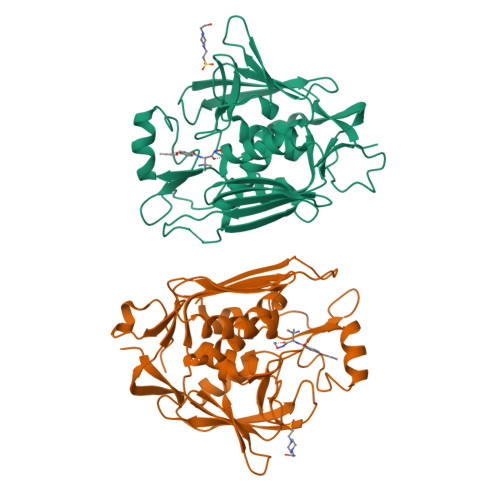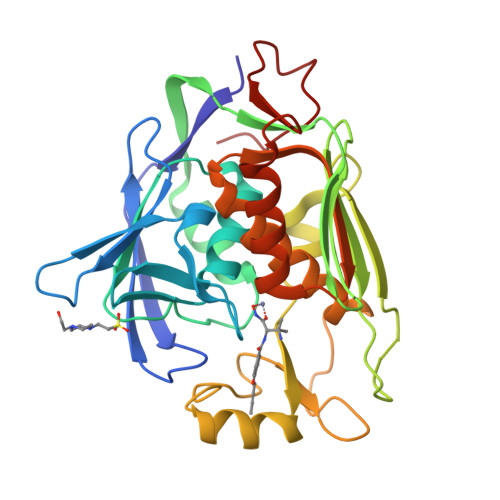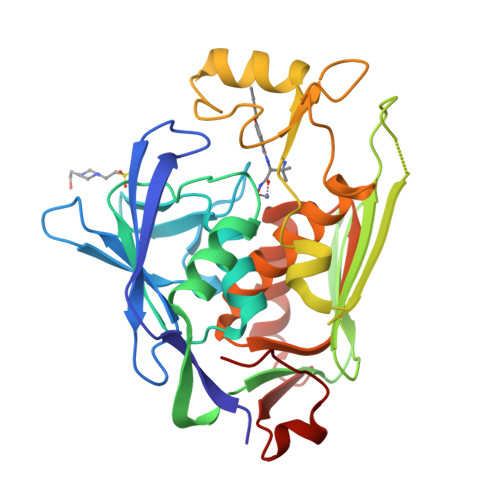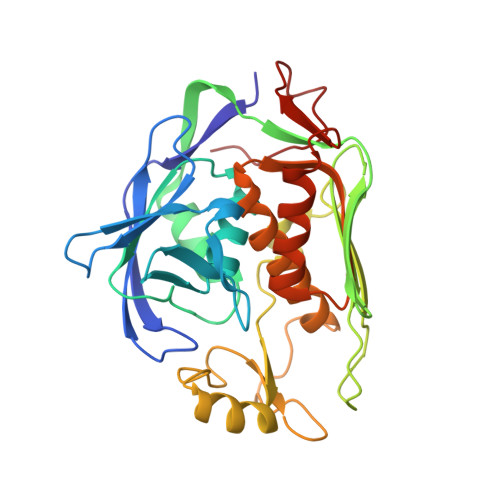Design, Synthesis, and Properties of a Potent Inhibitor of Pseudomonas aeruginosa Deacetylase LpxC.
Piizzi, G., Parker, D.T., Peng, Y., Dobler, M., Patnaik, A., Wattanasin, S., Liu, E., Lenoir, F., Nunez, J., Kerrigan, J., McKenney, D., Osborne, C., Yu, D., Lanieri, L., Bojkovic, J., Dzink-Fox, J., Lilly, M.D., Sprague, E.R., Lu, Y., Wang, H., Ranjitkar, S., Xie, L., Wang, B., Glick, M., Hamann, L.G., Tommasi, R., Yang, X., Dean, C.R.(2017) J Med Chem 60: 5002-5014
- PubMed: 28549219
- DOI: https://doi.org/10.1021/acs.jmedchem.7b00377
- Primary Citation of Related Structures:
5U39, 5U3B - PubMed Abstract:
Over the past several decades, the frequency of antibacterial resistance in hospitals, including multidrug resistance (MDR) and its association with serious infectious diseases, has increased at alarming rates. Pseudomonas aeruginosa is a leading cause of nosocomial infections, and resistance to virtually all approved antibacterial agents is emerging in this pathogen. To address the need for new agents to treat MDR P. aeruginosa, we focused on inhibiting the first committed step in the biosynthesis of lipid A, the deacetylation of uridyldiphospho-3-O-(R-hydroxydecanoyl)-N-acetylglucosamine by the enzyme LpxC. We approached this through the design, synthesis, and biological evaluation of novel hydroxamic acid LpxC inhibitors, exemplified by 1, where cytotoxicity against mammalian cell lines was reduced, solubility and plasma-protein binding were improved while retaining potent anti-pseudomonal activity in vitro and in vivo.
Organizational Affiliation:
Infectious Diseases Area, Novartis Institutes for BioMedical Research , Emeryville, California 94608, United States.




















